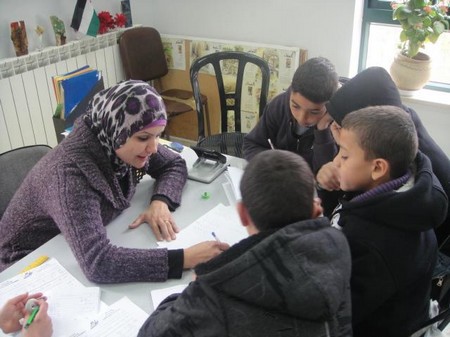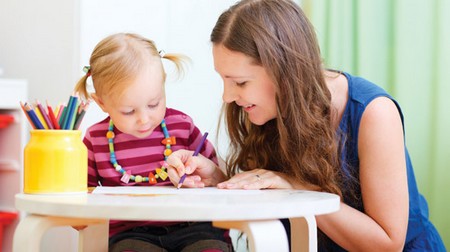Best Way to Deal with a Child’s Learning Difficulties (LD)
Children experience learning difficulties for many reasons:
- In some instances, a child is of below-average ability and, as a result, is expected to have difficulties with school work. Such a pupil has a general learning difficulty.
- In other instances, a child is of at least average ability, uses language well in discussion, gives an impression of being bright, and yet has unexpected difficulties with reading, writing, and spelling. Such a pupil has a specific learning difficulty.
- How can learning difficulties be recognized? Generally, students with learning difficulties have
- uneven academic results;
- difficulty organizing time, work, and materials;
- trouble with social relationships;
- trouble sequencing size, shapes, and distances;
- noticeable gaps in learning;
- trouble with fine motor and/or gross motor development.
Learning difficulties have an emotional component—a child with learning difficulties whose condition has not been properly identified may have a poor self-image because he thinks he is not as bright as his classmates. He may lack confidence with any task that involves schoolwork, and often describes himself as “stupid.” The longer the child’s learning problem goes undiagnosed, the worse his psychological problem will become. That’s another reason why early identification is important.
Children with learning difficulties often have a history of slow speech development in the preschool years, and there is often a family history of speech and learning difficulties, perhaps involving parents, aunts and uncles, or other relatives. These signs, however, are only guidelines, and their presence does not mean your child has learning difficulties. Many children without learning difficulties also show these features in the early stages of learning to read, write, and spell. You should become concerned only if problems persist beyond the first year of grade school.
Often teachers label children as having learning difficulties if they show some of these characteristics:
- immature behavior;
- low self-esteem;
- short attention span;
- impulsiveness;
- argumentativeness;
- inability to cope with the work at the grade level;
- aggressiveness;
- acting out.
A diagnosis of learning difficulties can and should be made only by a psychologist after having fully assessed the child in the following areas:
- Level of intelligence. This must be measured using a standardized intelligence test. Weaknesses with specific learning skills can also be identified (such as in auditory or visual short-term memory, pattern recognition, ability to recall sequences, spatial skills).
- Level of attainments in reading, spelling, writing, and math. The psychologist will establish the exact level of the child’s progress in each of these areas. The first stage will be to find an age level (for example, a nine-year-old child may read at a level normally associated with a five-year-old, and hence has a reading age of five).
- Pattern of errors. Aside from quantifying the child’s educational attainments, the psychologist will consider the types of mistakes that the child makes in reading, writing, spelling, and math, since this will enable future learning support to be targeted most effectively.
- Learning attitude. The attitude that a child has toward learning partly determines his level of success or failure. Children with learning difficulties often appear to make little effort in any task that involves literacy. These children should not be accused of laziness—rather, it’s as though they have given up trying altogether because they expect to fail.
- Developmental background. A diagnosis of learning difficulty can only be made after the elimination of other, external factors that could depress progress in school. These factors could include stress at home (such as recent divorce, bereavement), lack of stimulation in the preschool years (possibly due to long periods of hospitalization), and hearing or visual difficulties.
- Certain strategies can help the child with learning difficulties, both at home and at school:
- Praise your child whenever he does something well.
- Ensure that you have the child’s attention before you give him instructions.
- Stay close to your child to help him maintain his focus and attention.
- Help your child avoid situations where he is bound to fail.
- Keep distractions minimal.
- Help your child break big jobs into smaller tasks. Do them one at a time. The tasks should be focused and structured to be relevant in the child’s life.
- Give your child one instruction at a time.
- Realize that simple tools can sometimes cause injury. Your child might not be able to use a stapler, scissors, paper cutter, or pencil sharpener.
- Give your child lots of structure.
- Avoid open-concept classrooms; they often prove to be full of distractions.
- Have your child sit at the front of the classroom, if at all possible, under the eye of the teacher.
- Remove superfluous materials because they are a source of distraction.
- Use taped books to reinforce your child’s visual reading.
- Ask your child to pronounce his spelling mistakes.
- Present learning materials in a variety of ways: verbal, visual, and tactile. Teachers should present any new material using several different methods.
- Present new concepts in class. Your child should never try to learn new material as “homework.”
- Review, review, review, and review.
- Be realistic. Your child will need longer to do tasks. He has to be taught in a way that is cooperative, to ensure his ongoing development of skills. He cannot be competitive or he will fail.
Surprisingly, children with learning disabilities often need more, not less, organized stimulation. Ways to provide this include the arts, music, drama, sports, and dance.
Categories
Advertisements
Recent Articles
 How to Understand Bed Sizes – A Small Guide
How to Understand Bed Sizes – A Small Guide How to Select Some Must Have Kitchen Accessories
How to Select Some Must Have Kitchen Accessories Best Way to Change a Car Tire
Best Way to Change a Car Tire Best Way to Write an Affirmation
Best Way to Write an Affirmation Best Way to Take Charge of Your Financial Life
Best Way to Take Charge of Your Financial Life Best Way to Survive a Party When You Don’t Know Anyone
Best Way to Survive a Party When You Don’t Know Anyone Best Way to Stop Self Sabotaging Yourself
Best Way to Stop Self Sabotaging Yourself Best Way to Start Journal Writing
Best Way to Start Journal Writing Best Way to Speak with a Powerful Voice
Best Way to Speak with a Powerful Voice Best Way to Simplify Your Life
Best Way to Simplify Your Life Best Way to Respond to a Put-Down
Best Way to Respond to a Put-Down Best Way to Reduce Acne Breakouts
Best Way to Reduce Acne Breakouts Best Way to Recover from Dining Disasters
Best Way to Recover from Dining Disasters Best Way to Quit Your Job Gracefully
Best Way to Quit Your Job Gracefully Best Way to Make Your Own Website
Best Way to Make Your Own Website




Leave a Reply